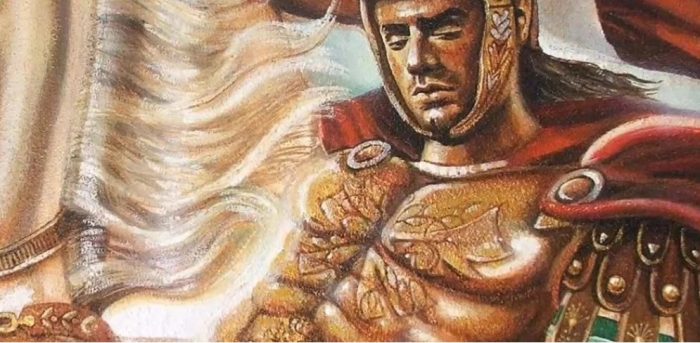Saint Florian, helper of the persecuted
Estimated reading time: 5 minutes 389
His persecutions took place at the turn of the 3rd and 4th centuries. Florian headed the governors office.

Roman Catholic: May 4 (arbitrary memory). In the liturgical calendar of the Roman Church, St. Florian, the martyr, is remembered on May 4. On the same day, International Firefighters' Day (IFFD) is celebrated. He refused to take an oath before the Roman gods, and when he wanted to help the persecuted, he died for his faith. According to the most common version, Florian lived in the Roman province of Ufernoricum - today's Upper Austria (part of the province of Noricum after its division), during the time of the last great persecutor of Christians, Emperor Diocletian.
His persecutions took place at the turn of the 3rd and 4th centuries. Florian headed the governor's office. Searched for the truth and accepted Christianity - secretly at first. And then, as a member of the Christian community in Lavriacus (present-day Lorch, a district in the city of Annecy), he refused to take the oath to the Roman gods, obligatory for officials, which the emperor demanded.

Because of this, he lost his job and moved near present-day St. Pelten, where he began to serve as a military commander. He was an extraordinary person with great abilities.
On the news of the severe persecution that the young Church in Lavriac was experiencing, Florian returned there, wanting to help his fellow believers. He set out at the head of a small armed detachment, fully aware that under such conditions in the state, his campaign would most likely end in defeat. At the entrance to the city, Florian and his soldiers were met by the representatives of the governor, Aquilinus, and told about the "disposition": Christians are enemies of the state, they are being persecuted. Saint Florian did not hide his faith. He was immediately captured, taken to the governor, where they tried to persuade and flatter him, and then subjected him to severe torture: they whipped him, tore his body with hooks, and then tied a stone to his neck and threw him off the bridge into the Anezus River (now Enns).

It was May 4, 304. Together with St. Florian, a group of those Christians who defended Florian himself and protested against such a cruel and unjust sentence died. Their remains rest in the new main altar of the basilica in Lorch. The collegium located nearby stands on the site of the first burial of the Lavriak martyr. His courageous profession of faith gave courage to other Christians to persevere in faith and hope.
Popular piety "appointed" St. Florian to be the patron saint of firefighters. He is honored as a deputy during both fires and floods; he is the patron of metallurgists and glassblowers, soot shakers and brewers, coopers, charcoal makers and ceramicists.
In 1971, the Austrian diocese of Linz chose St. Florian as its first patron. It was then that the relics of the holy martyr were brought to Lorch from Krakow by Cardinal Karol Wojtyla. However, the first relics of the saint were brought there in 1736 by Jan Alexander of Lipsky, then the bishop of Krakow. His relics came to Poland in the 12th century, which is recorded in "Annales Capituli Cracoviensis". At first they were in the main altar of the Wawel Cathedral, and St. Florian himself became the first patron of Krakow. Some of the relics were left for the church consecrated in his name, which was built in the Kleparovo district in 1185. It was there, many centuries later, that the young Father Karol Wojtyla was a vicar priest.

From Krakow, the cult of St. Florian spread to all of Poland, and from Poland to Hungary. In 2004, on the occasion of the 1700th anniversary of his death, St. Florian was proclaimed the second (together with St. Leopold) Patron Saint of Austria, and in the Catholic Church there, 2004 became the Year of St. Florian.
The name "Florian" means "blooming", is a symbol of the "tree of faith". This saint was willing to help people, which is why he became not only the patron saint of firefighters, but also a model for people in public positions, a model of service, primarily for politicians. "Passio Floriani" is the oldest surviving document about the life of this saint dating back to the 8th century, written 450 years after his death. However, it will not be possible to say that this is only a pious folk tale without proper historical grounds. Thanks to this manuscript, archaeologists discovered the foundations of a late Romanesque church under the basilica in Lorkh, and in it, in the central place, were the remains of 40 people, most likely Christians, killed together with the holy martyr.
Now the main altar of the basilica stands there, and nearby is the Abbey of St. Florian. It was founded by the Benedictines, and after them the Lateran regular canons came there. This is the only known "Austrian" martyr from the beginning of Christianity.

















